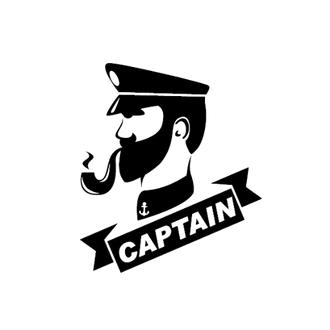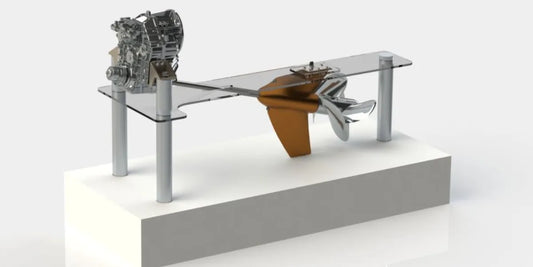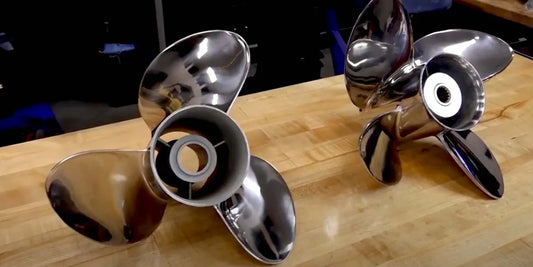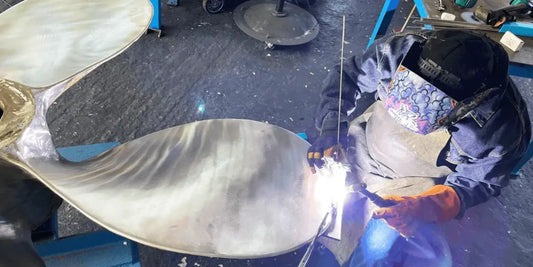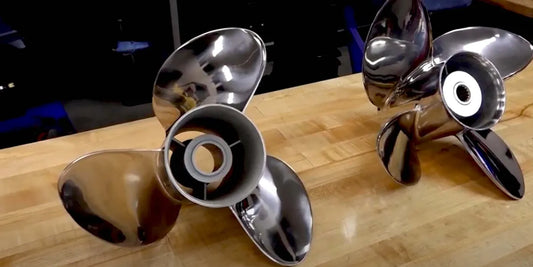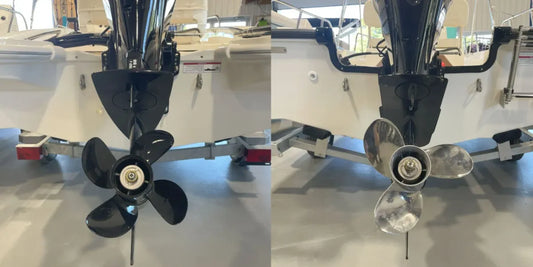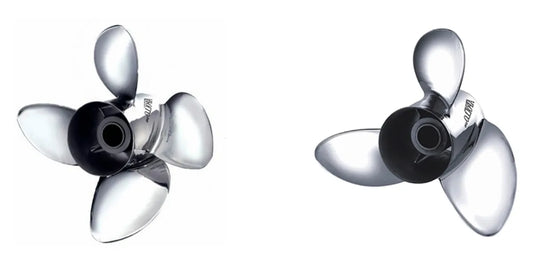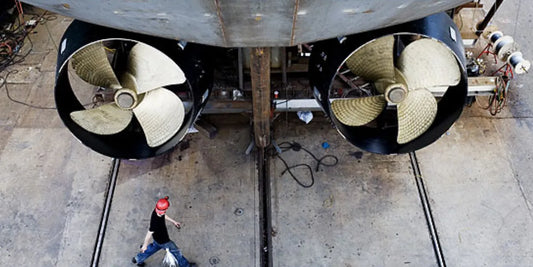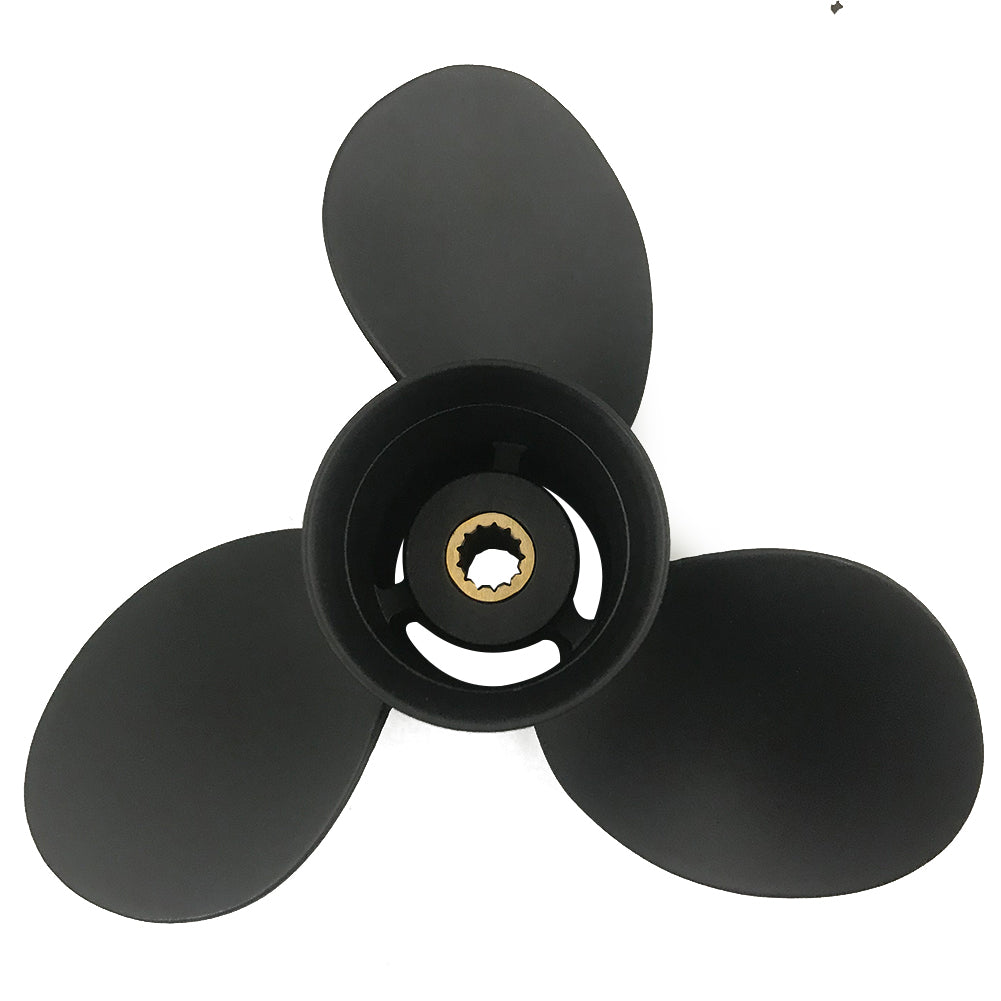Maintaining your inboard propeller is not just about keeping the boat running; it is a matter of performance, safety, and longevity. Whether you are an experienced skipper or a casual weekend boater, the realization that regular maintenance affects all performance and durability factors may make a significant difference. This guide will cover all the necessary steps, along with some expert tips, to keep your inboard propeller in tip-top shape, saving you from the expense of repairs or unexpected downtime. From checking for common signs of deterioration to implementing preventive measures, this article helps you maintain your boat, keeping it running smoothly and ready to go. Get ready to elevate your maintenance program and enjoy better times on the water.
Understanding Inboard Propellers

What is called an Inboard Propeller?
The inboard propeller serves as a significant mechanism for boat propulsion, situated under the hull and connected to the inboard engine through the driveshaft. Inboard means streamlined design; the engines and related components are located inside the boat, thereby minimizing drag and increasing performance. These propellers are typically made of bronze or stainless steel to provide sufficient strength to withstand the stresses of high-speed rotation and wear caused by water.
Propellers are sized, pitched, and designed with blade shapes that match the power output of the boat's engine and the vessel's intended use, whether for cruising, fishing, or watersports. Proper maintenance and the use of the correct propeller can enhance efficiency, thereby reducing fuel consumption while ensuring good overall vessel performance. Knowing your inboard propeller well is crucial to maximizing your boating experience.
Types of Inboard Propellers
By understanding the types of propellers available, one can select the correct inboard propeller to optimize performance and efficiency. Each type of propeller comes with a set of unique capabilities that cater to specific boating applications.
Fixed-Pitch Propellers: With fixed-pitch propellers, the blade angles are fixed and cannot be changed. These propellers, usually made of bronze or stainless steel, are popular due to their simple construction and reliability. They are suited for circumstances that require a general performance guaranteed at a standard set, such as cruising or recreational boating.
Adjustable-Pitch Propellers: These types of propellers can adjust the pitch angle of the blades. Such adaptability can be observed in cases where boats require variable performance, such as those used alternately for speed and towing. Because they need more maintenance than fixed-pitch designs, their versatility, however, can provide a huge benefit to overall efficiency under varying conditions.
Feathering Propellers: These are mostly found on sailboats. The blades of these propellers turn in line with water flow when not in use, thus decreasing drag and increasing sailing efficiency. This feature is excellent for a sailor who wishes to gain maximum speed and fuel economy under sail.
Surface-Piercing Propellers: Designed especially for high-speed boats, surface-piercing props operate above water level, thereby reducing resistance to enhance higher speed potential. This prop is generally used on racing or performance crafts, which tend to prioritize high speed and agility over other performance factors.
Controllable-Pitch Propellers (CPP): A controllable pitch propeller allows adjustment of the blade angles in real time during the operation of the boat. This allows the operator to maneuver the boat more easily and to control performance under different load or speed conditions precisely. A CPP system is typically installed on commercial or industrial vessels that require great adaptability.
Changing an inboard propeller depends on satisfying specific criteria, including the intended use of the boat, engine power, and performance expectations. Buying the perfect propeller can improve performance, provide smooth operation, and increase engine life.
How Inboard Propellers Work
An inboard propeller is attached to an inboard engine, allowing it to receive and convert its power into the rotational movement of the propeller. The engine turns the shaft, which is connected to the inboard propellers, along with the rotation of the propeller blades in the water, creating a pressure gradient; hence, forward or backward thrust is generated depending on the rotation direction.
Performance, design, and mechanics come into play with the inboard propellers. When setting or calibrating blade pitch, diameter, and the number of blades, factors considered include speed, fuel efficiency, and maneuverability. Hydrodynamic blade shapes and high-quality materials enable these modern designs to deliver under adverse conditions. Additionally, power modulation and other maintenance needs can be reduced through popular means, such as CPPs or coating systems, which meet vessel operators' ever-changing criteria. Regularly inspecting the propellers and ensuring they are perfectly aligned with the engine minimizes vibration and improves propulsion efficiency.
Importance of Proper Maintenance

Why Is Maintenance So Important for Inboard Boats?
Just like every automobile, boats require regular maintenance to ensure their longevity, efficiency, and proper working capacity. Over time, boats undergo wear caused by environmental conditions and operational stresses on the intricate components of the inboard propulsion rotation mechanism, including the shaft, propeller, bearings, and, in some cases, its engine. In most instances, minor components become worn, going unchecked during their regular maintenance inspections, thus causing a cascade of problems: engine and transmission efficiency loss in fuel consumption, increased vibration, and mechanical failure in the worst case; good repair and restoration require so much money and are life risks during boating activities.
Keeping the boat free of corrosion is one essential part of maintenance. Saltwater, in particular, is blamed for its strong corrosive effects on metallic parts. It is advisable to protect all critical sections from corrosion by using anti-corrosive treatment, cleaning them regularly, and employing sacrificial anodes. Lubrication and fluid checks should be another key component to ensure that adequate friction and heat build-up are minimized. An engine or gearbox, depending on the level of clean lubrication, requires an operating system to reach its optimum level.
Additionally, hull maintenance and inspection for damage and cracks are directly related to the boat's performance. A poorly maintained hull could increase drag, affecting speed and fuel efficiency. Technological advancements in condition monitoring systems have enabled proactive maintenance by generating real-time data on crucial components, allowing owners to identify developing problems and take remedial action before they escalate into full-scale failures, thereby ensuring the safer and more cost-effective enjoyment of their boats.
Common Problems with Inboard Propellers
Several common problems can drastically alter the performance and efficiency of inboard propellers. Sometimes, cavitation occurs on the propeller when bubbles form around the blades due to improper pitch or excessive speed; this particular issue drastically reduces efficiency and also damages the propeller's surface. Propeller damage—things like bends, dings, and cracks—are often the result of these unavoidable encounters with floating debris or sandbars and shallow waters; even the smallest of deformations can upset the balance of the propeller and trigger vibrations. There is also marine growth on the blades, including barnacles, algae, and similar organisms. This marine growth adversely affects performance because it increases drag.
Another prevalent area of concern is poor alignment between the propeller shaft and engine, which can cause accelerated wear and vibration, thereby compromising the longevity of vital equipment. Likewise, imbalanced propellers, which can arise from damage or lack of maintenance, can stress the engine, resulting in increased fuel consumption and potential long-term damage. Regular inspections, combined with prompt repairs and adequate cleaning, will solve most problems, resulting in optimal operating efficiency and the long life of the equipment.
Signs to Replace Your Boat Prop
Several characteristics may be present in a boat propeller, exhibiting wear and damage, indicating that it needs replacement. Performance is perhaps the primary indication that such a propeller experiences lower top speeds or has difficulty maintaining constant RPMs, accelerating sluggishly. Other signs may include physical damage to the blades, such as denting, cracking, or distortion, all of which can compromise hydrodynamics and lead to either vibrations or uneven travel of the vessel.
As increased fuel consumption occurs, it may be an indicator of an inefficient propeller, with the engine straining hard to compensate for the loss in thrust. Scratches or corrosion may develop on the blade surface of the prop, mainly when occasionally used in shallow or debris-laden waters; this process of wear will gradually affect its performance.
Using a propeller that does not match the power or load requirements of your boat results in an inefficient situation. Routinely performed evaluations and inspections help catch these signs early. The best course of action is to replace a compromised prop quickly, ensuring smooth and efficient operation while doing your engine a favor: rather than putting excessive strain on it or even damaging it. Additionally, investing in a quality and well-fitted replacement helps with fuel efficiency, handling, and keeps maintenance costs low in the long run.
Essential Maintenance Tips

Regular Cleaning Procedure
Proper maintenance of your propeller begins with consistent cleaning. Carefully remove the propeller, then inspect it for debris, fishing lines, or marine growth that may have gathered around the hub and blades. Organisms such as algae and barnacles can induce drag, thereby reducing performance. Therefore, it is essential to remove them by scrubbing with a soft-bristle brush and environmentally friendly means, such as cleaning solutions. Mild dish detergent and warm water are the best combination to remove dirt and grime without damaging the surface.
Additional marine cleaners soluble in propeller-staining formulations for use when tackling difficult stains are preferred, provided a marine cleaner can be found that is safe to use on your propeller material. Rinse thoroughly with fresh water after cleaning to prevent residues from remaining on the surface, which can combine with salt or contaminants and cause corrosion. Check for any chips or cracks after cleaning-the tiniest amount of damage can cause long-term deterioration in performance. Once this is done regularly, the vessel will remain strong, and fuel efficiency will be maintained, ensuring everything works well for your boat.
Checking for Damage and Wear
Regular propeller inspections are conducted to check for erosion or any damage that could lead to faulty propeller performance and reduced vessel efficiency. Checks may include bent blades, nicks, and corrosion. Any slight imbalance caused by irregularity can reduce the thrust and, consequently, increase fuel consumption. Special focus should be placed on the hub, as misalignments or cracks in this area could be potential signs of stress damage or wear over time.
Another point of caution concerns changes in pitch and diameter, which may happen through deformation, causing the propeller to perform less than optimally. Research supports that an ideally maintained propeller can improve the overall efficiency of the vessel by 10%. Hence, regular inspections have their own importance. Inspections should be carried out using a propeller pitch gauge for accurate measurements. Continuous monitoring thus prolongs the propeller's life by reducing maintenance costs, which in turn leads to further savings on fuel.
Proper Storage Practices
Proper storage of propellers is crucial to ensure the durability and performance of the propeller over time. To protect them, the propellers should always be kept in a clean, dry, and temperature-controlled environment, with no fluctuations in moisture or temperature, as these can cause corrosion or warping. Padded surfaces or racks specially designed for hanging should be used to prevent scratching or denting, which will otherwise compromise the integrity of the propellers. When storing propellers for an extended period, it is advisable to cover them with a protective coating or wrap them in an anti-corrosion material. They should be regularly checked for any signs of deterioration and stored securely, away from heavy equipment and in areas where a fall or impact could cause damage. Such practices ensure the propeller remains in a ready condition, ensuring safe and efficient use whenever required.
Choosing the Right Propeller for Your Boat

Key Factors to Consider When Choosing the Boat Propeller
Selecting the right propeller is crucial to the performance, fuel consumption, and handling of a boat. The main factors that need to be considered while making a selection are:
Diameter and Pitch: Diameter and pitch have a direct bearing on the performance of a propeller. Diameter is the distance across the circle formed by the rotation of the blades, which affects the thrust and water displacement. A larger diameter would be used for greater thrust for heavy boats, though smaller diameters are used for speedier, lighter ones. Pitch is the distance that a propeller, in one full rotation, would theoretically travel forward through water, affecting speed and also its capacity to bear load. Lower pitch accepts faster acceleration at the expense of speed, while higher pitch achieves greater speed but lower acceleration.
Material composition: Propellers are typically made of aluminum, stainless steel, or composite materials. Aluminum is lightweight, less expensive, and sufficient for most everyday uses. Stainless steel, considered expensive, provides the utmost durability and performance under more demanding circumstances. The attractiveness of composite materials lies in their corrosion resistance, making them a cost-effective alternative for recreational boaters.
Number of blades: The number of blades of the propeller impinges on the ratio of speed, power, and smoothness. Three-blade propellers are relatively standard, as they offer a good balance of speed and efficiency. Four- and five-blade propellers tend to deliver smooth performance with increased grip in the water, making them suitable for towing activities or working in choppy conditions.
RPM Range and Engine Compatibility: The propeller must be matched to your engine's recommended RPM range for optimal operation. Outside the recommended range, the operation will lead to inefficiency and strain on the engine. Matching the propeller to your engine's specifications creates a perfect balance between the two, resulting in versatile performance for any boating task.
Boat Type and Usage: Pick parameters and purposes for the vessel. For example, fishing vessels may require propellers that allow for slow-speed control. At the same time, speedboats require propellers built for fast-speed control—specific propeller options are necessary for activities such as watersports or heavy towing.
Cavitation and Ventilation Prevention:Choose a design free from all cavitation and ventilation processes, which means in thrust efficiency. Cupped blades are just one feature that helps to prevent these performance problems, while coatings are another.
By carefully evaluating these factors, you can choose a propeller that is specifically suited to your craft, further enhancing the boat's utility and overall boating experience.
Understanding Propeller Diameter and Pitch
Depending on the diameter and pitch of a propeller, the performance and efficiency characteristics of a boat change. Propeller diameter means the distance across the circle measured from the tip of one propeller blade to another, which results from the spinning of a propeller. A larger diameter typically forces more water and generates more thrust, which is beneficial for slower, heavier boats such as trawlers or pontoon boats. On the other hand, small diameters are typically used for lighter, faster vessels, where acceleration and top speed take priority.
On the other side, pitch measures the distance the propeller would thrust a boat ahead with one complete revolution, assuming no slip. Higher-pitch propellers propel a boat a considerable distance with each turn, excelling at achieving top speed but perhaps requiring high engine output. Lower-pitch propellers facilitate low-speed turning and quick acceleration, thereby enhancing towing, water sports/agility maneuvers.
Hence, when selecting a propeller, one must strike a proper equilibrium between diameter and pitch, either just right for the engine or the use of the given boat. For example, if the pitch is too high for the engine, the engine becomes strained and may also become less efficient as a result. Whereas, if the pitch is too low, the engine will keep revving too high, and that itself is opposed to the ship's interest in the long run.
The diameter and pitch chosen should complement key features, such as the boat's weight, hull design, and the maximum allowable RPM for the engine. Based on these, manufacturers typically provide options for you to choose from so that you may work for the best-balanced option for performance and efficiency. Hence, if you do this correctly, you reduce engine wear, maximize fuel efficiency, and achieve better handling on water.
Popular Brands: Acme and Volvo Penta
In propeller designs, Acme and Volvo Penta hold leading positions and continue to provide innovative solutions that reduce compromises in performance and durability. Acme Propellers enjoys a solid reputation due to its precision engineering approach, which utilizes CNC machining technology to provide consistent and efficient propulsion. These propellers are considered to last quite a long time, but they are eminently customizable. This feature makes them eligible for a range of applications, from recreational to competitive water sports.
Fueling a powerboat with a Volvo Penta would have been advanced marine propulsion in the sale-and-service side of operations. Among its various offerings, the Dual Prop offers the advantages of improved operational efficiency, increased speed, and superior handling. Additionally, in the spirit of sustainability, Volvo Penta provides eco-designed propellers that minimize fuel consumption and reduce emissions. In terms of whether one is seeking fine-tuned performance or eco-efficiency, it would be worth considering these two magnificent companies, which epitomize the best of quality and reliability.
Upgrading Your Inboard Propeller

When to Consider Upgrading
When considering a change to the inboard propeller, I usually start by evaluating her performance as it is now. Suppose I observe that fuel efficiency is reduced, or acceleration is sluggish, or I can barely muster the top-end speed. In that case, it is a recognizable sign that the propeller may no longer be optimally functional in modern times. Repeated vibrations or an inability to maintain a steady speed can also indicate that the propeller is damaged or simply not the right fit for what the mariner demands of it. These can drastically reduce both the efficiency and the boating experience, so it is surely apt to consider an upgrade.
Another consideration would be whether my boating demands have changed over the years. To put it simply, if I have recently started hauling heavier cargo in the boat and engaging in other activities, such as watersports or fishing, with my boat, then my current propeller might not be an ideal fit anymore. The right pitch and material are chosen for the new propeller, which will prevent the vessel from becoming a hazard to itself while also operating efficiently under the new conditions. It is an additional reason for an upgrade: the improvement in propeller technology, which incorporates better profiles to provide higher thrust with reduced fuel consumption, and further benefits.
Another factor that I hold dear is that of sustainability. If I intend to lessen my environmental footprint as much as possible, the change should be made to an eco-efficient propeller engineered for lower emissions and fuel consumption. This will make my boating practices compatible with my commitment to protecting the marine ecosystem. To sum up, upgrading an inboard propeller is a choice that enables me to maximize every bit of enjoyment from any trip, whether for improved performance, new needs, or reduced environmental impact.
Benefits of High-Performance Propellers
From the standpoint of a mechanic, high-performance propellers provide plenty of benefits to my boating ventures, both in the functionality of the vessel and the enjoyment of the activity. First, from the perspective of an engineer, they improve both efficiency and thrust while reducing drag, assisting in smooth operations, and optimizing fuel consumption. Operating cost savings translate into a reduced environmental impact for my trips, and as an eco-conscious person, this is something I strive to practice. They also provided a step up in acceleration and top speeds, allowing for a greater hold even when water conditions become challenging.
This is another prime operator: durability. High-performance propellers are often constructed from fine materials, such as stainless steel or specially treated alloys. With such materials, damages from debris or wear through time become rarer events. Therefore, my replacements rarely come calling; maintenance headaches take a backseat, while my thoughts are free to wander excitedly about on-water antics. Moreover, these can be custom-adapted to best suit my individual needs, highway shallow, towing, or enhanced maneuvering for casual cruising.
High-performance propellers have now become my own domain, supporting the very goals of maximum enjoyment, efficient operation, and sustainability. With a proper prop, I experience smooth rides, heart-in-throat power, and solid peace of mind knowing that my boat will somehow weigh into performance and sustainability, regardless of whether it's driven by an evil or good-humored spirit, in whichever way possible. Just.
Installation Tips for New Propellers
Installing a new propeller can be daunting, but with the right mindset and preparation, it becomes simple and rewarding. First, I gather all my tools, including a propeller wrench, pliers, and marine-grade grease. Next, I check the manufacturer's instructions for my specific propeller and engine type to ensure they will fit and work well together.
After I remove my old propeller, I will scrutinize the drive shaft for any damage or corrosion, ensuring it is clean and well-lubricated before proceeding. Applying a thin coat of marine grease to the shaft will make installing the propeller easier and aid in maintenance down the line. The new prop should then be aligned with the spline and held firmly in place as the washers and nut are reinstalled. The nut must be tightened according to the specified torque to prevent vibration or potential damage during use.
With the nut secured in place by a cotter pin for an added safety measure, I would perform a final fit check on the prop by spinning it manually to ensure it rotates smoothly. Ensuring proper installation guarantees maximum performance and efficiency throughout the boating experience, and extends the life of the prop for years to come. Following all these steps assures me that my craft will give me a smooth and dependable ride anywhere across water.
Reference Sources
-
Propeller Maintenance - Mercury Marine: Offers tips on inspecting and maintaining propeller blades to prevent damage.
-
7 Tips for Boat Propeller Maintenance - Boat Mart: Provides practical advice on cleaning and caring for boat propellers.
-
Inboard Boat Maintenance – A Complete Guide - GetMyBoat: Includes guidance on lubricating the propeller shaft and other maintenance essentials.
-
How To Change A Boat Propeller The Right Way - Hull2Prop: Explains the process of replacing a propeller for optimal performance.
-
5 Ways to Keep Your Boat Propeller Working Optimally - PropGlide: Focuses on cleaning, anti-corrosion coatings, and regular inspections for propeller upkeep.
Frequently Asked Questions (FAQs)
What are the benefits of an inboard boat propeller?
For the most part, inboard boat propellers are said to offer countless advantages over outboard boat propellers, mainly in terms of the best possible performance and stability. At the highest speeds, they are considered to perform more efficiently, and therefore, they are preferred for recreational activities such as wakeboarding and skiing. Another advantage could be their durability, as they are mostly constructed from stainless steel or Nibral, which does not deteriorate even under adverse underwater conditions. This durability highly equates to less maintenance for the boat owner. Numerous boat builders recommend inboard propellers for respectable performance in specific market segments, including commercial and recreational vessels.
How do I determine the correct size for my inboard propeller?
Choosing the correct size inboard propeller is one of the most crucial decisions to ensure optimal performance. The diameter and pitch of the propeller dictate how efficiently the vessel travels through the water. A larger diameter propeller would push better, while a propeller with a larger pitch would make the boat go faster. Boat owners should consider what their boat will be used for, as activities such as wakeboarding have different requirements. Talking to professionals or using the tools made available by ACME MARINE, for example, are good ways to make sure you choose the right kinds of components for your inboard craft.
How do you go about changing the inboard propeller?
Changing an inboard prop can be a simple process if you know what to do and have the necessary tools at hand. Start by removing the existing prop using a prop puller and proper hardware to prevent damage to the hub. Once it is removed, you can install the new one by ensuring that it aligns with the strut and shaft. When finding an alternative prop, look for those that come from reputable manufacturers, such as Michigan Wheel or Acme, which are considered very reliable. Checking for size and specifications is also crucial to ascertain that it is compatible with your inboard propulsion.
What materials are commonly used for inboard propellers?
Essentially, inboard propellers are traditionally cast in bronze, stainless steel, or Nibral. Due to their very hardy nature and corrosion resistance, stainless steel props are used for both present-day recreational and commercial uses. Bronze props are said to have great wear resistance and are well adopted by the marine builders because they are very reliable. Nibral refers to a nickel-bronze-aluminum alloy, making it suitable for strong and efficient finishes, typically used in high-end performance propellers. As they all differ in peculiarities, you really have to decide based on your boating needs.
Pitch propellers or performance propellers - which is the difference?
Pitch and performance propellers serve contrasting needs in the inboard propulsion system. In essence, pitch propellers maximize the amount of thrust the boat produces so that the maximum efficiency in the actual movement of the vessel through the water is achieved. Performance propellers, conversely, are designed for high-speed operation and maneuvering, and often employ advanced designs, such as CNC machining, for extreme precision. Thus, whether for recreational fun or wakeboarding, your choice of propeller can definitely give you an advantage on the water. Brands like OJ and Acme offer a range of options to suit various needs.
What are the factors I must look at when choosing inboard boat propellers for commercial purposes?
For instance, several considerations must be taken into account when selecting inboard boat propellers for commercial applications. Firstly, consider the size and weight of the vessel and cargo, or provide input on the type of activity it will be engaged in. The diameter and pitch of the prop, for example, will translate to the speed and efficiency of the vessel itself, the very essence of commercial applications. Besides, the question of durability does arise; hence, the choice of props must be made with high-quality materials, such as stainless steel or Nibral. Such resources will assist commercial boat owners in making informed propeller choices by consulting experts and studying selections from reputable brands.
